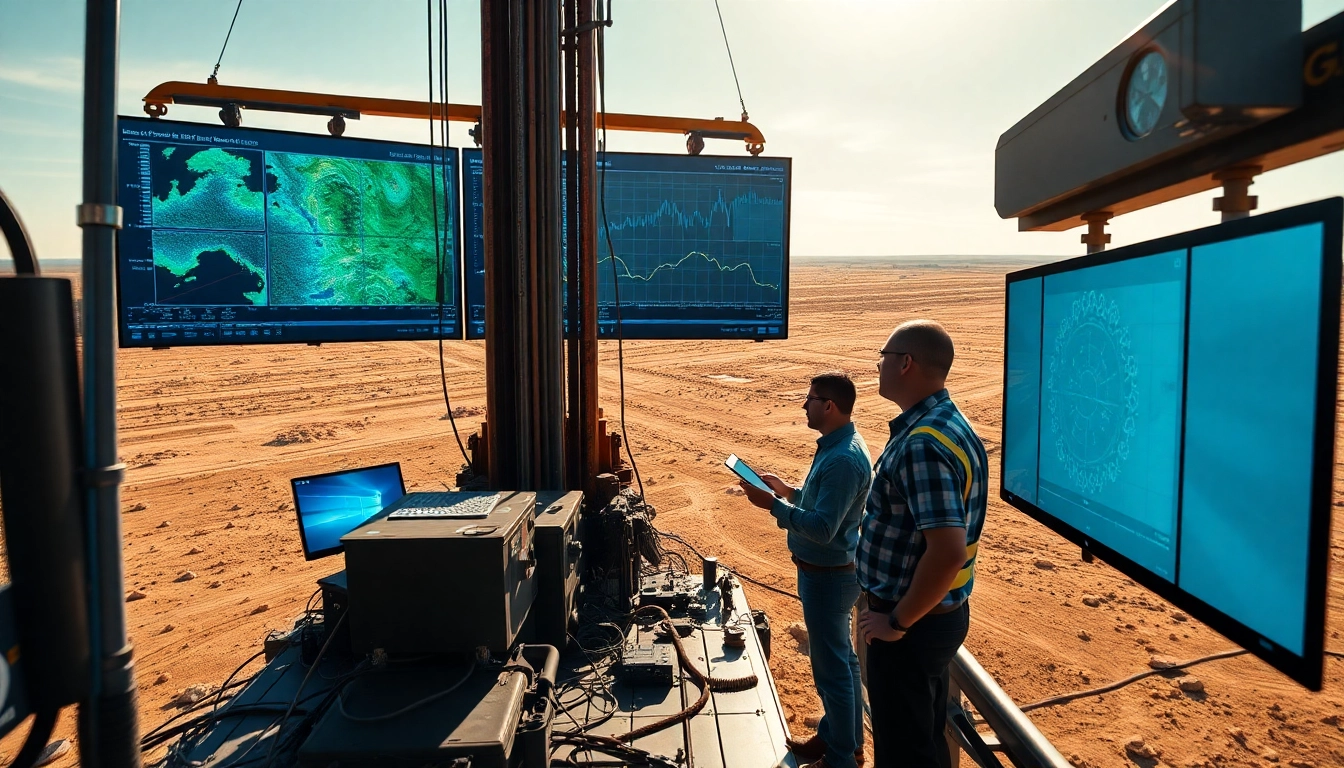Understanding Geosteering Techniques
Geosteering stands at the intersection of geology and technology, transforming how the oil and gas industry approaches drilling operations. By integrating real-time data analysis with advanced drilling techniques, geosteering permits operators to navigate geological formations more efficiently, drastically improving the chances of successful drilling outcomes. For comprehensive insights into geosteering solutions, visit www.geosteeringvision.com.
What is Geosteering?
Geosteering is a technique used predominantly in the oil and gas sector to maintain the accuracy and efficiency of drilling operations. It involves continuously monitoring geological data collected during the drilling process to adjust the trajectory of the wellbore in real-time. This approach ensures that the drill remains in the desired geological zone, which can lead to significant improvements in resource extraction rates.
The Importance of Real-Time Data
The essence of effective geosteering lies in real-time data, which allows drilling teams to make informed decisions about well placement and trajectory adjustments on the fly. Sensors and logging tools provide valuable information about the surrounding geological formations, such as density, porosity, and lithology. This data informs decisions about how deep to drill and the direction to take, minimizing the risks associated with drilling through unexpected formations. The reliance on real-time data ensures that operators can optimize their trajectories and enhance the chances of hitting productive zones.
Common Challenges in Geosteering
While geosteering offers numerous benefits, it is not without challenges. Notable hurdles include:
- Data Overload: The sheer volume of data generated can overwhelm teams. A robust data management system is crucial for filtering and interpreting relevant information.
- Real-Time Decision Making: Teams must be trained to make quick decisions based on data analytics; a lack of experience can lead to suboptimal well placements.
- Geological Complexity: Some formations contain unpredictable geology, making it difficult to maintain a targeted trajectory.
Key Technologies Used in Geosteering
Advanced Drilling Equipment
Modern drilling operations depend on a variety of sophisticated equipment that supports geosteering efforts. This includes rotary steerable systems (RSS) that allow for precise adjustments to the drill bit’s angle and trajectory. Such equipment enables drilling teams to actively navigate complex geological features while drilling.
Geological Data Analytics
Data analytics technologies play an essential role in the geosteering process. By leveraging powerful algorithms and machine learning models, operators can analyze historical and real-time data to predict geological formations’ behavior. Moreover, these systems can identify patterns that inform strategic drilling adjustments, further enhancing operational efficiency.
Software Solutions in Geosteering
To process and visualize geological data effectively, geosteering relies heavily on advanced software solutions. These tools integrate various data sources, offering comprehensive dashboards that present drilling metrics, geological information, and operational insights at a glance. Paired with advanced visualization techniques, such software ensures that drill teams can interpret complex data effectively and make informed decisions swiftly.
Implementing Effective Geosteering Practices
Planning for Success
Successful geosteering begins in the planning phase. Before drilling commences, teams should conduct a detailed analysis of geological maps and previous drilling data to establish a clear drilling plan. This preparation will minimize the need for rapid adjustments during drilling operations, optimizing both time and costs.
Executing Geosteering Operations
During the drilling process, executing geosteering operations requires a coordinated effort among all team members. Continuous monitoring and real-time data analysis support timely decisions regarding adjustments to the wellbore trajectory. Engaging in regular communication among team members further reinforces this collaborative effort, ensuring everyone is aligned on objectives and strategies.
Monitoring and Adjusting Strategy
Monitoring geosteering operations allows teams to evaluate the effectiveness of their strategies. By analyzing metrics related to drilling performance and geological data, teams can refine their approaches, adapting to challenges that arise along the way. Regular strategy sessions, based on data insights, help teams pivot when needed and maintain optimal drilling paths.
Case Studies on Geosteering Success
High-Profile Projects
Numerous high-profile projects have demonstrated the effectiveness of geosteering in maximizing drilling success. By applying innovative geosteering techniques, operators have significantly reduced drilling times and enhanced recovery rates, proving the technique’s potential in high-pressure, high-value situations.
Lessons Learned from Field Applications
Field applications of geosteering have revealed key insights and best practices. One common lesson is the importance of pre-drilling analysis and continuous training for drilling teams. Understanding the specific geological context and ensuring that teams are equipped to read and react to real-time data have emerged as crucial factors for success.
Impact on Production Efficiency
Geosteering considerably impacts production efficiency by reducing non-productive time during drilling operations. By maintaining optimal wellbore trajectories and enhancing recovery from reservoirs, companies using geosteering practices have reported increased overall production, demonstrating the effectiveness of this innovative approach.
Future Trends in Geosteering
Innovative Technologies on the Horizon
The future of geosteering looks promising, with innovative technologies such as artificial intelligence (AI) and enhanced data analytics expected to transform the field further. These technologies can enable even better real-time data interpretation, automating parts of the decision-making process and allowing for quicker reactions to geological surprises.
Shifts in Market Demand and Practices
As the energy landscape evolves, so too does the demand for effective geosteering techniques. The push for sustainable practices is driving interest in geosteering not only for efficiency but also for better resource management and minimized environmental impact. As regulators focus on accountability in energy production, the ability to navigate geological formations wisely will become increasingly essential.
The Role of Geosteering in Sustainable Energy
In an era focused on sustainable energy solutions, geosteering has the potential to play a pivotal role. By optimizing drilling strategies and minimizing waste, geosteering practices can contribute to more sustainable extraction methods for fossil fuels while also supporting the transition to renewable energy resources. This duality underscores the importance of geosteering in meeting both current and future energy demands responsibly.


